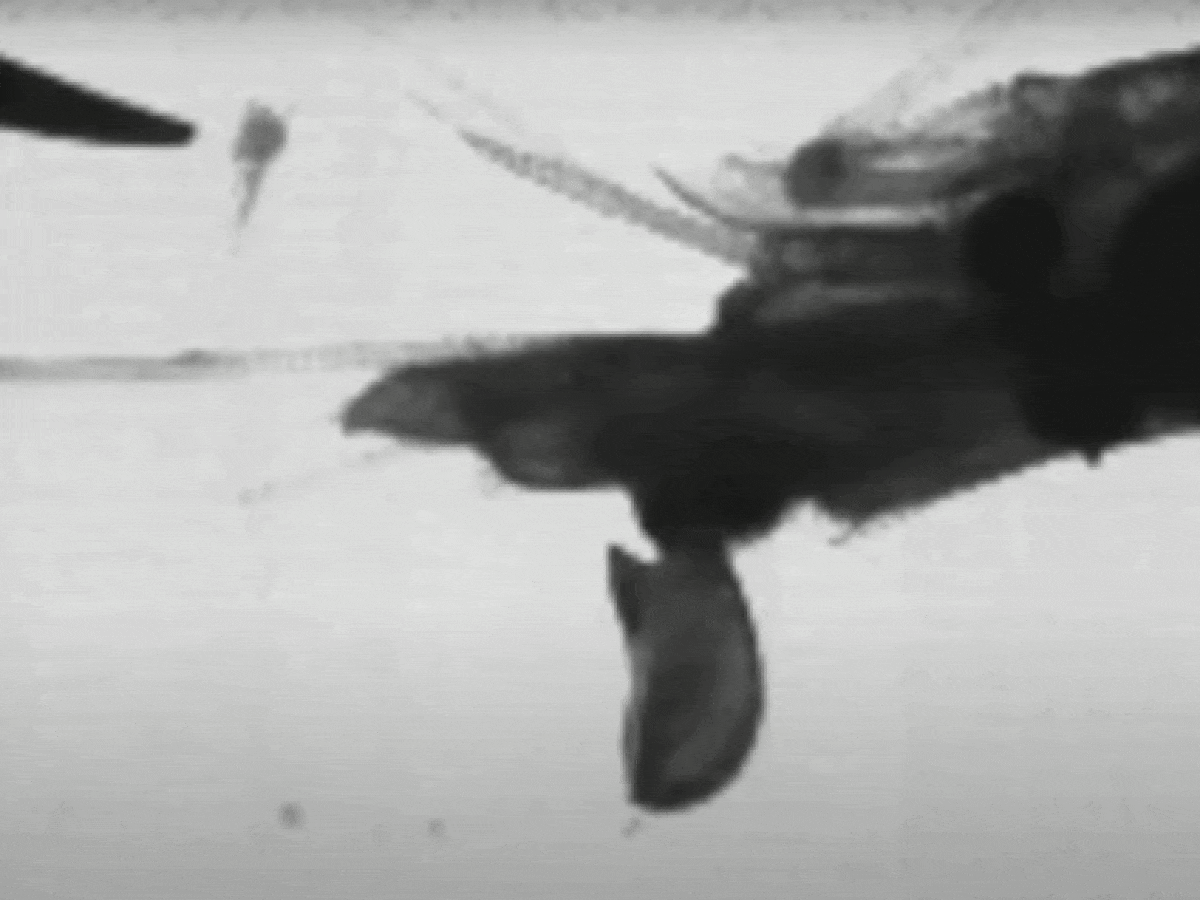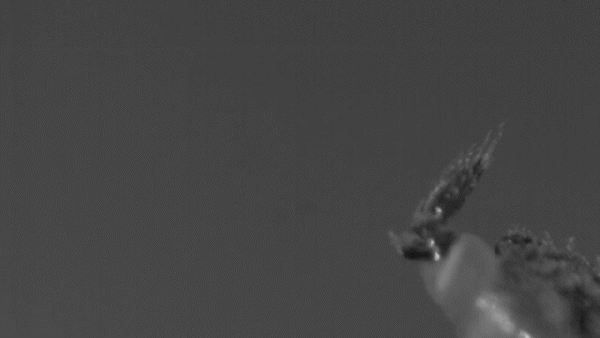New Research
Bumblebees Learn to Open Puzzle Boxes From Each Other
New findings might suggest the insects have a capacity for culture, researchers say
Why Scientists Are Studying the Stray Dogs Living at Chernobyl
A new study is a first step toward understanding how radiation exposure might affect DNA
Why Newborn Chicks Love Objects That Defy Gravity
A clever new study shows the cute critters will often scuttle toward a video of a rising ball
Ancient DNA Sheds Light on Europe's Hunter-Gatherers
Researchers looked at the genomes of several hundred people who lived before, during and after the last ice age
How Vacationers on Antarctic Cruises Are Filling in Scientific Gaps
From ships and submarines, citizen scientists can access remote areas ripe for new discoveries. But does the research make up for the climate impact?
Archaeologists Find Evidence of Earliest Known Horseback Riders
New research indicates that humans were riding horses as early as 5,000 years ago
Some Whales Use a Creaky 'Vocal Fry' Voice to Find Food
Like humans, toothed whales have three vocal registers: chest, falsetto and vocal fry
Kids Discover That EpiPens May Not Work in Space
After returning from space, the life-saving drug epinephrine had partially changed into poisonous benzoic acid
Scientists Discover Oldest Known Fossils of Pollen-Carrying Insects
It’s unclear whether the creatures were pollinating prehistoric plants or just getting a snack
Hidden Chamber Revealed Inside Great Pyramid of Giza
Researchers used cosmic-ray imaging to uncover the 30-foot-long corridor
Rare Jurassic-Era Insect Discovered at Arkansas Walmart
The species had not been recorded in eastern North America for more than 50 years—and never documented in the state
NASA's Moon Dust Problem Might Finally Have a Solution
Researchers sprayed liquid nitrogen at spacesuit-clad Barbie dolls to test their novel idea
These Mythical Sea Monsters May Have Been Whales With Unusual Dining Habits
Tales of creatures like the Norse “hafgufa” suggest ancient and medieval people may have seen whales trap feeding
Artificial Sweetener Tied to Risk of Heart Attack and Stroke, Study Finds
Erythritol was not proven to cause these health problems, but some experts recommend limiting intake
These Young Shrimp Can Snap Their Claws as Fast as a Speeding Bullet
Juvenile snapping shrimp can achieve the fastest acceleration of any repeatable, underwater motion by a living thing, per a new study
These Tiny Bugs Urinate by Flinging Droplets of Pee
Sharpshooters are the first example of “superpropulsion” in a living organism, according to new research
Scientists Find Evidence of Another Core Within Earth's Center
The newly proposed layer might have a different structure from the rest of the inner core
Did Air Pollution Influence Famous Impressionist Painters?
Artists like Turner and Monet painted the smog they saw in London and Paris, a new study says
Is This Wooden Artifact an Ancient Roman Phallus?
Thirty years ago, researchers thought that the 2,000-year-old object was a darning tool
Amateur Fossil Hunter Discovers New Species of Giant Petrel in New Zealand
The now-extinct birds, which lived roughly three million years ago, likely used their hooked bills to feast on seal carcasses
:focal(3000x1829:3001x1830)/https://tf-cmsv2-smithsonianmag-media.s3.amazonaws.com/filer_public/31/68/31685afa-4a6d-4c89-b348-0139880a9803/pexels-myriams-fotos-13233397.jpg)
:focal(2000x1352:2001x1353)/https://tf-cmsv2-smithsonianmag-media.s3.amazonaws.com/filer_public/61/fd/61fd17f8-a036-436f-be48-4421da2aac21/gettyimages-1241010106.jpg)
:focal(800x602:801x603)/https://tf-cmsv2-smithsonianmag-media.s3.amazonaws.com/filer_public/57/cd/57cd6da5-e1c6-4b8d-988c-d30d2a2b3ff8/gettyimages-931846248_web.jpg)
:focal(1400x947:1401x948)/https://tf-cmsv2-smithsonianmag-media.s3.amazonaws.com/filer_public/07/28/07286a73-f17f-4143-9743-7e85a2b71055/ezgif-2-14a87858dc.jpeg)
:focal(800x602:801x603)/https://tf-cmsv2-smithsonianmag-media.s3.amazonaws.com/filer_public/64/58/645809db-ca06-4a81-acfe-00ebb89facca/sgigantea_-_mark_niesink_1.jpg)
:focal(2562x1708:2563x1709)/https://tf-cmsv2-smithsonianmag-media.s3.amazonaws.com/filer_public/2f/85/2f85970c-e6c0-4345-bc3e-3c0caddcc0ef/gettyimages-130879709.jpg)
:focal(350x213:351x214)/https://tf-cmsv2-smithsonianmag-media.s3.amazonaws.com/filer_public/ae/04/ae04a32a-a5ce-4797-b730-871d16387c2b/low-res_mr_scan_of_porpoise_head_with_two_pairs_on_phonic_lipspng.jpg)
:focal(1500x1000:1501x1001)/https://tf-cmsv2-smithsonianmag-media.s3.amazonaws.com/filer_public/4b/d1/4bd11af3-e994-4611-9e1f-3e5835e8f420/gettyimages-594875768.jpg)
:focal(1000x1029:1001x1030)/https://tf-cmsv2-smithsonianmag-media.s3.amazonaws.com/filer_public/6f/2f/6f2f3efa-61e1-4e64-a6cd-a542dfb347de/oldest-known-pollen-ca.jpeg)
:focal(3185x2123:3186x2124)/https://tf-cmsv2-smithsonianmag-media.s3.amazonaws.com/filer_public/98/0a/980a11c9-4e79-4905-86bb-f43a91523f73/gettyimages-1470733178.jpg)
:focal(500x224:501x225)/https://tf-cmsv2-smithsonianmag-media.s3.amazonaws.com/filer_public/4f/5d/4f5d0579-4168-42e1-8061-be59b306043e/lacewing-main.jpeg)
:focal(512x229:513x230)/https://tf-cmsv2-smithsonianmag-media.s3.amazonaws.com/filer_public/b7/8f/b78f6889-9334-4e81-8260-8eb421f314f8/barbie-1024x457.jpeg)
:focal(400x240:401x241)/https://tf-cmsv2-smithsonianmag-media.s3.amazonaws.com/filer_public/1a/fd/1afdedfc-46e4-4338-af46-1f08811efd5a/mysterious-new-behavio-1.jpg)
:focal(1061x707:1062x708)/https://tf-cmsv2-smithsonianmag-media.s3.amazonaws.com/filer_public/98/0d/980dc228-6a1f-4389-813d-c4f1df0b9b6d/gettyimages-636740079.jpg)


:focal(1061x707:1062x708)/https://tf-cmsv2-smithsonianmag-media.s3.amazonaws.com/filer_public/e5/4e/e54e779c-2763-44e4-84aa-046e85cb1fee/gettyimages-1465832641.jpg)
:focal(1024x761:1025x762)/https://tf-cmsv2-smithsonianmag-media.s3.amazonaws.com/filer_public/e2/f9/e2f95f4b-6dec-47a4-be37-bb645836c584/2048px-rain_steam_and_speed_the_great_western_railway.jpeg)
:focal(375x250:376x251)/https://tf-cmsv2-smithsonianmag-media.s3.amazonaws.com/filer_public/5b/64/5b64f0c7-6fda-4138-ac39-0a8b4b26b206/vindolanda-wooden-phallus-3-2.jpg)
:focal(757x540:758x541)/https://tf-cmsv2-smithsonianmag-media.s3.amazonaws.com/filer_public/56/a7/56a7d087-69c4-4f7b-a47d-51f66093a25e/taxonomy-03-00006-g006.jpg)